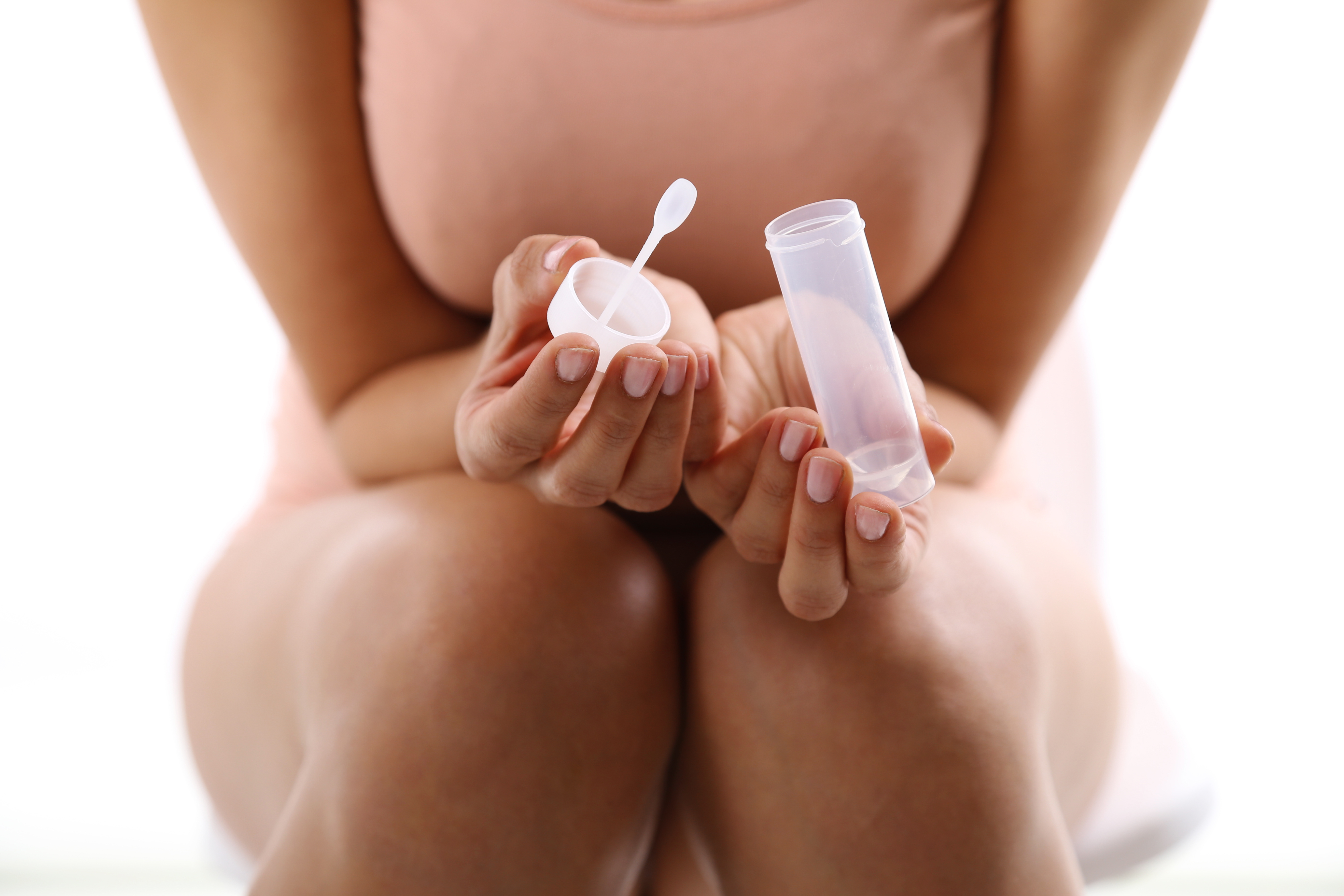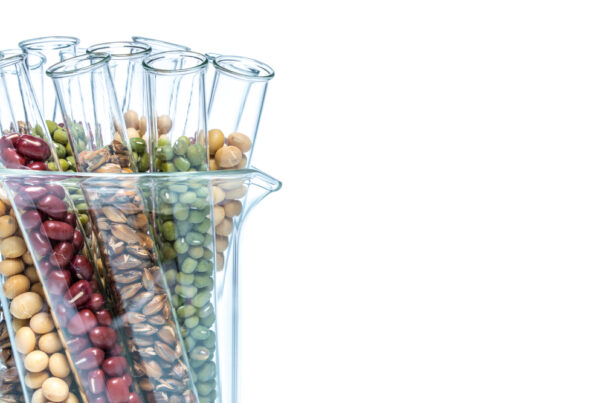Currently there is a lot of confusion amongst both practitioners and the public when it comes to stool testing. We are overwhelmed by laboratories providing different tests and practitioners using different types of labs, and we don’t know which ones are worth the money that we pay for them.
Because let’s be honest. These tests are not cheap!
I’ll admit that even I was confused by all the testing and what people were telling me, so I thought I would investigate this a bit better, both for me and other practitioners, and also clients so they don’t waste their money on clinically irrelevant tests.
Because both clinicians want their clients to get better and clients want to improve their health.
So…
WHAT ARE THE ANSWERS THAT WE’RE LOOKING FOR?
For the ordinary person out there, the criteria when forking out money to do an expensive test would be:
- Am I going to get the answers to why I feel the way I feel?
- Will this give me an answer into what I need to do about it?
People will pay any amount of money (within reason off course) if they know it will give them answers and an action to follow.
For clinicians, the criteria when asking their client to fork out money for a test and what they can tell their client when the results return would be:
- Will I understand the results?
In other words, will I be able to interpret them?
- Is it clinically relevant?
In other words, can I match this to my client’s symptoms?
- Is the test reliable?
In other words, will I be leading my client down the ‘garden path’?
- Is the test actionable?
In other words, can I form a successful health plan for my client?
- Do we want/need to know about their digestive function as well?
In other words, ability to digest, bile function, pancreatic function, SCFA (short chain fatty acid) production, etc.
Thus, to summarize, there are some important factors to consider when it comes to stool testing.
- If they test the sample today, or test it four days later, will the lab get the same or at least close to the same result?
- How specific is the information that I’m getting?
- Is the information clinically relevant?
- Can it measure susceptibility?
- Can it measure colony forming units?
Susceptibility testing is where you can measure for dysbiotic organisms in someone’s digestive tract but then also measure what herbs or antibiotics will kill that specific strain of organism in that person’s gut. It measures for resistance to treatments, or in other words, what will work and what won’t, which can be very beneficial in a clinical setting.
Currently there are many methods of testing such as:
- Culture
- Traditional PCR
- Multiplex Tandem PCR
- Real-Time PCR
- Selective Microbiome Profiling (PCR)
- 16S RNA
The very important take-home message is that…
…there is no one perfect method of testing.
All tests have benefits and drawbacks. It is up to the clinician or client to decide what it is that they are looking for and what will give them the best actionable outcome.
CULTURE
This is still the gold standard of testing in the microbiology world and will not be going away anytime soon. With culture testing you have the ability to isolate organisms and test for antimicrobial susceptibility.
MALDI-ToF Culture
MALDI-ToF (Matrix Assisted Laser Desorption Ionization Time of Flight spectrometer) technology was developed by two German scientists in the late 1980’s and only given FDA clearance in 2013.
Here is an explanation from Bioscreen Laboratories in Victoria (Aus):
The MALDI-TOF is a state-of-the-art analyser where bacteria are vaporized using a laser beam to produce a cloud of peptide molecules (small protein molecules). These peptides are separated in the spectrometer to produce a spectrum of different size peptides or a ‘Peptide Fingerprint’. The peptide fingerprint that is characteristic of each bacterium.
MALDI-ToF technology identifies pure organisms and can identify more than 1,400 bacteria and yeast at both genera and species levels. This technology has the ability to identify unusual species due to its specificity and can identify up to 180 different yeast species and 86 different Candida species (just to put it into perspective).
As such it provides a large taxonomic depth into clinically relevant species tested as well as colony forming units. It provides better accuracy and examination of samples are reproducible. According to studies more than 90% of bacterial isolates are identified at species level and 98% at genus level (Muaary, 2012).
No matter what is growing in your gut, it will ask the question, ‘Who is there?’ This comes from the perspective that we are testing a unique individual and have no knowledge as to what is growing in his/her digestive system.
MALDI-ToF technology can test accurately for and is FDA cleared to test for:
- Salmonella spp.
- Shigella spp.
- Yersinia spp.
- Edwardsiella tardi
- Esherichia coli (specific species)
Drawbacks
A lot of bacteria are not routinely cultured due to being obligate anaerobes. An obligate anaerobe is a bacteria that cannot survive in the presence of oxygen.
This type of testing also has longer turn around time for results due to the time it takes to culture these bacteria and also test for susceptibility. It’s just the way nature works.
TRADITIONAL PCR (Polymerase Chain Reaction)
All living organisms, including bacteria, contain unique sequences of genetic material that consists of DNA (deoxyribonucleic acid) and RNA (ribonucleic acid). DNA tells us about the organisms cellular reproduction and RNA tells us more about how these organisms construct proteins that are essential for their biological processes. PCR is a fast and inexpensive technique used to ‘amplify’ or copy small segments of DNA for identification. This method of PCR amplification is vital to get a more accurate result as significant amounts of DNA are necessary for molecular analysis.
PCR testing is more accurate than microscopic examination often performed by routine pathology laboratories, and more in depth than 16S RNA testing. To put it into perspective it’s like getting the person’s surname, name, phone number and address in the telephone book because they are sequencing the whole DNA strand.
Here is an exert from the National Human Genome Research Institute on PCR testing:
To amplify a segment of DNA using PCR, the sample is first heated so the DNA denatures, or separates into two pieces of single-stranded DNA. Next, an enzyme called “Taq polymerase” synthesizes – builds – two new strands of DNA, using the original strands as templates. This process results in the duplication of the original DNA, with each of the new molecules containing one old and one new strand of DNA. Then each of these strands can be used to create two new copies, and so on, and so on. The cycle of denaturing and synthesizing new DNA is repeated as many as 30 or 40 times, leading to more than one billion exact copies of the original DNA segment (National Human Genome Research Institute, 2015).
The entire cycling process of PCR is automated and can be completed in just a few hours. It is directed by a machine called a thermocycler, which is programmed to alter the temperature of the reaction every few minutes to allow DNA denaturing and synthesis.
An important point to remember with PCR testing is that there are different forms and standards of PCR testing amongst laboratories. Don’t assume that they all follow the same procedure. Some PCR tests have been validated by the FDA (USA) but some also haven’t.
In general PCR testing is very effective to test for pathogenic bacteria, viruses and parasites, but it has a limited range in what it can test for. PCR test development has been limited so there are still many organisms that cannot be tested for accurately using PCR.
What does it measure?
PCR testing measures microbial-specific nucleotide sequences or 16S piece of rRNA. However, there are no PCR methods yet for testing for the following bacteria:
- Klebsiella pneumonia
- Enterobacter aerogenes
- Serratia marcesens
- Proteus spp.
- Providencia spp.
- Citrobacter spp.
- Hafnia alvei
- Morganella morganii
- Escherichia coli (some)
It generally measures ‘Is it there?’. This means it may not just take a general measurement of the gut microbiota, but would have to guess what may be growing inside the specific person and only test for those specific organisms. Thus it relies a lot on what the particular lab tests for.
Drawbacks:
At the same time PCR testing can also test for hundreds of resistance markers in the stools of clients that are otherwise healthy. This is because the test is that sensitive. If someone was exposed to antibiotics years ago which created a type of resistance to both pathogenic or non-pathogenic bacteria, then this will be detected in the test even though the client may not have a problem with that bacteria at that point in time. This can sometimes provide erroneous treatment options when people decide to treat something that isn’t really a problem.
Just to get DNA and RNA markers in a stool without the organism necessarily being present doesn’t give a clinician relevant information to act upon. A positive PCR test can’t differentiate between living or dead organisms as genetic material can be in both. Many vaccines contain dead bacteria or viruses.
You also cannot convert a sequence to a colony forming unit. If a laboratory claims to be doing it, I would really question it.
Why treat infections that doesn’t exist just because there are still DNA or RNA remnants?
MULTIPLEXED TANDEM PCR
MT-PCR works the same as PCR testing but can use multiple primers within the same PCR sample. This means that it can amplify many different DNA sequences at the same time as if performing multiple separate PCR reactions together in one reaction.
This allows the laboratory to gain more information from one test run which means less reagents need to be used and time taken is a lot less with quicker turnover.
Drawbacks:
Same as with traditional PCR.
REAL-TIME PCR
Real-time PCR is also known as quantitative polymerase chain reaction (qPCR) and like other PCR methodologies is based on the traditional PCR technology. As the DNA is amplified it is monitored in real time with this method instead of at the end of the procedure. This allows the rate of generation of the amplified DNA to be measured at each PCR cycle which allows the laboratory to calculate relative gene expression or mRNA copy number in several samples which makes it ideal for measuring gene expression.
It is a three stage process where during the first stage the thermal cycler is heated to around 95 °C which allows the nucleic acid’s double chain to separate. The second stage occurs at 50 – 60 °C which allows the primers to bind with the DNA template. The third stage requires temperatures of 68 – 72 °C to polymerize DNA.
It provides rapid results and requires less reactants than standard PCR testing using electrophoresis.
Drawbacks:
Same as with traditional PCR.
SELECTIVE MICROBIOME PROFILING (PCR)
This could be described as ‘PCR on steroids’. It has CE-approval which is the FDA standard for Europe.
It has a very focused view of the microbiome in measuring both abundance and diversity targeting the most clinically relevant bacteria. When you go to a big party, you don’t generally want to know the name of every guest at the party. To get the most out of the party you would only want to know the names of the big players at the party, ie the celebrities, the influencers, the people who are important.
This test utilizes 54 probes for bacteria which covers 6 predominant phyla, 10 classes, 36 genera and 356 strains.
It will also give you the same result even if tested on different days. We mentioned this early on. You want to make sure that the laboratory doing the testing can reproduce the same or similar results even within a few days. Many laboratories cannot promise this. If you are in doubt, you need to ask the following questions:
- What is your inter-assay?
- What is your inter-assay coefficient?
16S RNA
16S ribosome RNA according to Wikipedia is the component of the 30S small subunit of a prokaryotic ribosome that binds to the Shine-Dalgamo sequence.
This takes highly amplified sequences such as 16S pieces of RNA, test for it, and then compare it to a reference library. It certainly gives you a very comprehensive ‘bird’s eye view’ of all the bacteria in the microbiota community.
What does it measure?
Drawbacks:
It has very limited taxonomical depth which means it can tell you what it is in general without any specificity. It’s a bit like saying that you found Mr. Smith in Australia. Well, there are many Mr. Smiths in Australia. We don’t know his name, his address, or his phone number. So how much can we do with this type of information?
The other drawback is that you cannot do susceptibility testing with this form of measurement.
Clinically the information is not functionally interpretable. It gives us a lot of information but more so about where more research is needed.
You cannot convert a sequence to a colony forming unit. If a laboratory claims to be doing it, I would really question it.
REMEMBER, TREAT THE CLIENT, NOT THE TEST
This is more for clinicians / practitioners, but I cannot emphasize this enough.
So many people and practitioners take tests and that is what they treat. No test is every 100% accurate. It provides an indication, clues, etc. Any test just provides a possible answer to why a client is experiencing particular types of symptoms or conditions. An experienced practitioner with a good understanding of physiology or biochemistry will be able to match seemingly unrelated test results to particular conditions.
But we’re not here to change numbers on a piece of paper. We are here to get people better.
You always treat the client.
SUMMARY
I’m bound to update this on a regular basis as I learn more about the different methodologies and techniques, and as new tests come out.
But I trust this provides you with some clarity on why all stool tests are not the same.
REFERENCES:
https://www.ncbi.nlm.nih.gov/pmc/articles/PMC3427873/
https://www.mlo-online.com/continuing-education/article/13009086/how-malditof-ms-has-changed-the-microbiology-lab
https://www.ncbi.nlm.nih.gov/pmc/articles/PMC3427873/
https://thehorse.com/154246/polymerase-chain-reaction-benefits-and-drawbacks/
Keyword – Gut Health Microbiome




